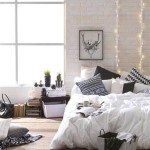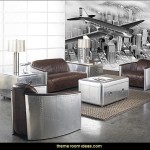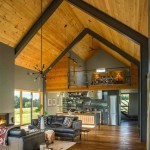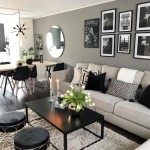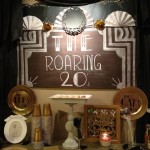How To Decorate a Yellow Bedroom
Yellow, often associated with sunshine, happiness, and energy, is a versatile color that can transform a bedroom into a welcoming and cheerful space. However, decorating with yellow requires careful consideration to avoid creating an overwhelming or jarring effect. This article provides a comprehensive guide to decorating a yellow bedroom, outlining key considerations and design principles for achieving a balanced and aesthetically pleasing result. From selecting the right shade of yellow to incorporating complementary colors and textures, this guide offers practical advice for creating a bedroom that is both visually appealing and conducive to rest and relaxation.
Choosing the Right Shade of Yellow
The success of a yellow bedroom hinges on the selection of the appropriate shade. Yellow is not a monolithic color; it encompasses a wide spectrum, ranging from pale, buttery hues to vibrant, almost neon tones. Each shade evokes a different mood and interacts differently with light and surrounding colors. A bright, saturated yellow can energize a room, making it feel vibrant and stimulating. In contrast, a softer, more muted yellow can create a calming and serene atmosphere.
Consider the natural light available in the bedroom. Rooms with ample natural light can often handle brighter yellows without feeling overwhelming. However, in rooms with limited natural light, a paler, more reflective yellow can help maximize brightness and create a sense of spaciousness. Darker or more intense yellows in dimly lit rooms may appear dull or even muddy.
The size of the bedroom is another important factor. Smaller bedrooms can benefit from lighter shades of yellow, which can help to make the space feel larger and more open. In larger bedrooms, bolder yellows can be used to create a more dramatic and impactful look. However, even in large rooms, it's important to use brighter yellows judiciously to avoid overwhelming the space.
Test paint swatches on the walls and observe how they appear at different times of day and under different lighting conditions. This will help in making an informed decision about which shade of yellow is best suited for the specific bedroom.
Beyond paint, consider the yellow tones in fabrics, furniture, and accessories. Coordinating these elements will contribute to a cohesive and harmonious design.
Incorporating Complementary Colors
While yellow can be effective as a primary color, it rarely functions optimally in isolation. The incorporation of complementary colors is essential for creating visual interest and preventing the bedroom from feeling monotonous. The choice of complementary colors depends on the desired mood and aesthetic.
Gray is a classic complement to yellow. A soft gray paired with a muted yellow can create a sophisticated and calming atmosphere. This combination is particularly well-suited for bedrooms aimed at promoting relaxation and tranquility. Charcoal gray can be used to add contrast and depth to a yellow room, creating a more dramatic effect.
Blue, the direct complement of yellow on the color wheel, provides a striking contrast. A combination of yellow and blue can be vibrant and energetic, but it must be carefully balanced. A softer, more muted blue, such as a dusty blue or a pale turquoise, can create a more harmonious and calming effect. Navy blue can be used as an accent color to add depth and sophistication.
White is a versatile neutral that works well with almost any shade of yellow. White walls provide a clean and crisp backdrop that allows the yellow accents to stand out. Conversely, yellow walls can be complemented by white furniture and accessories, creating a bright and airy feel.
Green can create a natural and organic feel when paired with yellow. A combination of yellow and green is reminiscent of nature and can be particularly well-suited for bedrooms with a botanical theme. Olive green and sage green are particularly good choices, as they provide a muted and sophisticated contrast to yellow.
When incorporating complementary colors, adopt the 60-30-10 rule: 60% of the room should be the dominant color (typically yellow), 30% should be the secondary color, and 10% should be an accent color. This rule provides a balanced and harmonious color scheme.
Balancing Texture and Pattern
In addition to color, texture and pattern play a crucial role in creating a visually appealing and comfortable bedroom. Texture refers to the surface quality of materials, while pattern refers to the repetition of visual elements. The effective use of texture and pattern can add depth and interest to a yellow bedroom, preventing it from feeling flat or bland.
Consider incorporating a variety of textures in the bedroom. Soft textiles, such as plush rugs, velvet cushions, and knitted throws, can add warmth and comfort. Rough textures, such as exposed brick or wood paneling, can add a rustic and organic feel. Smooth textures, such as polished metal or glass, can add a touch of sophistication and modernity.
Layering textures can create a sense of depth and complexity. For example, a yellow bedspread could be layered with a textured throw blanket and a collection of cushions in different fabrics and patterns.
Patterns can be used to add visual interest and personality to the bedroom. Geometric patterns, such as stripes or chevrons, can add a modern and dynamic feel. Floral patterns can add a touch of femininity and romance. Abstract patterns can add a sense of artistry and creativity.
When using patterns, it is important to avoid overwhelming the space. A good rule of thumb is to limit the number of patterns used in a room to three or four, and to vary the scale of the patterns. For example, a large-scale floral wallpaper could be paired with a smaller-scale geometric pattern on the cushions.
The scale of patterns should be considered relative to the size of the room. Larger patterns can be overwhelming in small rooms, while smaller patterns may be lost in larger rooms.
Texture and pattern can also be incorporated through architectural details, such as textured walls or patterned ceilings. These details can add a unique and distinctive touch to the bedroom.
The key is to create a balance between texture and pattern, ensuring that the bedroom feels cohesive and harmonious rather than chaotic or cluttered.
Furniture and Accessories
The selection of furniture and accessories is crucial for completing the design of a yellow bedroom. The style of furniture should complement the overall aesthetic of the room, while the accessories should add personality and visual interest.
In a yellow bedroom, consider using neutral-colored furniture to balance the boldness of the walls. White, gray, and natural wood tones are excellent choices for beds, dressers, and nightstands. Upholstered furniture in these neutral shades can also provide a comfortable and inviting seating area.
If opting for yellow furniture, choose a shade that complements the walls without being too matchy-matchy. Consider an accent chair in a slightly different shade of yellow or a piece of furniture with yellow accents.
Accessories play a vital role in adding personality and visual interest to the bedroom. Artwork, lamps, rugs, and cushions can all be used to enhance the overall design and create a cohesive look. Choose accessories that complement the color scheme and reinforce the desired mood.
Metallic accents, such as gold or brass, can add a touch of glamour and sophistication to a yellow bedroom. These accents can be incorporated through lamps, mirrors, or decorative objects.
Plants can add a touch of freshness and vitality to any room, and they are particularly well-suited for yellow bedrooms. Green foliage provides a natural contrast to the yellow walls and helps to create a calming and relaxing atmosphere.
Lighting is another important consideration. Use a combination of ambient, task, and accent lighting to create a well-lit and functional space. Dimmable lights are particularly useful in bedrooms, as they allow for adjusting the brightness to suit different activities and moods.
Window treatments can also play a significant role in the overall design. Consider using light and airy curtains to maximize natural light and create a soft and romantic feel. Blackout curtains can be used to block out light and create a more restful sleeping environment.
When selecting accessories, it is important to consider the scale and proportion of the room. Larger accessories can be overwhelming in small rooms, while smaller accessories may be lost in larger rooms.
Ultimately, the goal is to create a bedroom that is both visually appealing and functional, providing a comfortable and relaxing space to unwind and recharge.

20 Yellow Bedroom Ideas For 2025 Checkatrade
:strip_icc()/101295945-9f3381c4a5b54c4cbf645ce6b547c672.jpg?strip=all)
Yellow Bedroom Decor We Love

How To Decorate A Yellow Bedroom At Home Designcafe
:strip_icc()/101541274-2a51054ddf504b7ca63f74b33fe832e6.jpg?strip=all)
Yellow Bedroom Decor We Love

How To Decorate A Yellow Bedroom At Home Designcafe

15 Cheerful Yellow Bedrooms Chic Ideas For Bedroom Decor

20 Yellow Bedroom Ideas For 2025 Checkatrade

Yellow Bedrooms We Love Bedroom Walls Decor

Yellow Bedroom Decor Ideas
:strip_icc()/101256284-fe999ecddf04443ab0077f5bfd9bfb60.jpg?strip=all)
Yellow Bedroom Decor We Love
